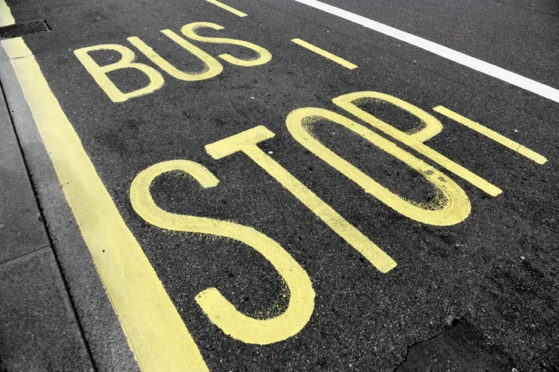People in the north-east are growing increasingly dissatisfied with public transport, according to a new survey exposing mounting frustration with Scottish public services.
Aberdeenshire recorded the highest levels of dissatisfaction with public transport of all Scotland’s local authorities and had the highest rate of people using a car every day on the mainland.
The Scottish Government’s Scottish Household Survey also found combined satisfaction with public transport, schools and healthcare at a record low.
Just 51.7% of Scots said they were satisfied with all three public services in 2018, the lowest level since it was first measured in 2007 and a sharp decline from a peak of 66% in 2011.
Across Scotland, the percentage of adults who declared they were “very” or “fairly” satisfied with their local public transport dropped from 75% in 2014 to 65% in 2018, the lowest since 2007.
North East Tory MSP Peter Chapman said rural Aberdeenshire was “not well served” by public transport.
“It’s little wonder passengers are fed-up,” Mr Chapman said.
“SNP cuts to council budgets have meant that it is near impossible for the local authority to keep subsidising many routes.
“That has left people struggling to get to medical appointments or out to meet friends and family.
“Many parts of Aberdeenshire do not have the option of rail links, so it is very important that bus routes are maintained where possible.”
In Aberdeenshire, 30% were “very dissatisfied” with public transport in 2018, an increase of 15.6 percentage points on the previous year and the highest percentage in Scotland.
Another 17% of people in Aberdeenshire described themselves as “fairly dissatisfied” with public transport.
Moray had the second highest proportion of “very dissatisfied” passengers, with 23% of those surveyed putting themselves in that category last year, an increase of 11.5 percentage points on the previous year.
A further 17% were “fairly dissatisfied” with Moray public transport.
The results were not quite so stark in Highland where 14% were “very dissatisfied”, an increase of 4.7% percentage points but still above the Scottish average of 7.4%.
Urban areas fared a little better with 8% in Aberdeen City classifying themselves as “very dissatisfied” and a further 14% as “fairly dissatisfied”.
Passengers have complained of delays on trains to and from Aberdeen, while rural villages and towns have campaigned against cuts to bus services.
Seven per cent of those surveyed in Aberdeenshire used the bus two or three times a week, compared with 11% in Aberdeen, while 55% of those over 17 drove a car every day, the highest percentage in Scotland outwith Shetland (58%).
More than 10,500 households took part in the survey, which the Scottish Government conducts annually to measure public opinion.
When it came to health, 81% said they were satisfied last year, the same record low as in 2007, and down from 88% in 2011.
For schools, 71% or people were satisfied compared to 79% in 2007 and a high of 85% in 2011.
Transport Secretary Michael Matheson acknowledged “more work” had to be done on public transport but added the government was investing more than £1 billion in it each year.
He added the Programme for Government included £500 million to reduce congestion on bus services.
A Moray Council spokeswoman said: “Due to the rural nature of Moray, residents can find it challenging to access public transport.
“One of the ways in which we address these challenges is to provide an ‘on-demand’ bus service, Dial M.”
Aberdeenshire’s infrastructure committee chairman Peter Argyle said rail services had been affected by the upgrading and of the Aberdeen to Huntly line and timetable changes.
“There is a new timetable coming in so hopefully that will make things better,” he added.
“Providing a subsidised bus service when budgets are being cut becomes increasingly challenging. There are areas of Aberdeenshire with very limited public transport, so we are looking at how we can best spend our £800,000 public transport budget in the best way to get the best possible service.”










